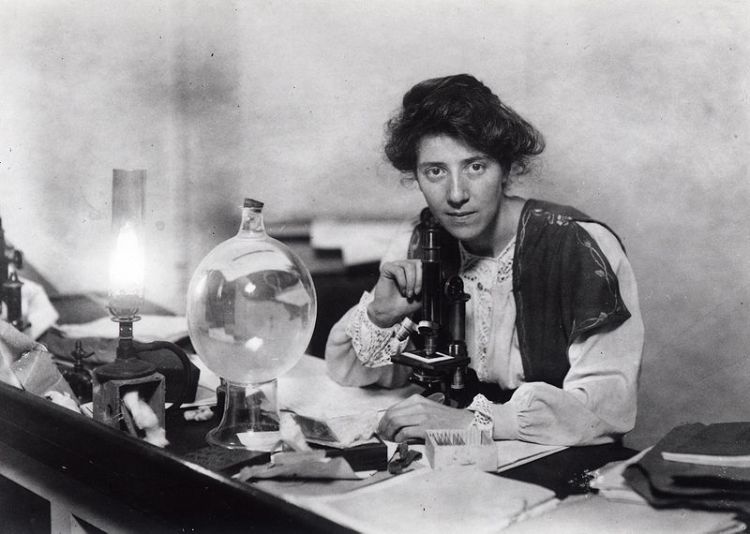George Bernard Shaw once wrote: “All progress is initiated by challenging current conceptions”. Those words describe exactly what Marie Stopes did during her entire life. Her book, Married Love (1918), is considered one of the most influential of the 20th century. A dedicated feminist, her views on birth control and contraception drew to her the hostile attentions of conservative forces in British Society, and Stope’s ideas were attacked through an assault of her own character. But in addition to her well-known work on birth control and women’s rights, she was a prolific poet, playwright and a paleobotanist.
Marie Charlotte Carmichael Stopes was born in Edinburgh, Scotland, on October 15, 1880. Her father, Henry Stopes, a brewer, architect and amateur paleontologist and archeologist, amassed the largest private collection of fossils and ancient stone tools in Britain. Her mother, Charlotte Carmichael, wrote British Freewomen: Their Historical Privilege. The book, published in 1894, was a great influence in the early twentieth century British women’s suffrage movement. They were both members of the British Association for the Advancement of Science.
Just before her twentieth birthday, Marie enrolled at University College London where she studied botany and geology. She graduated with honours after only two years and received the Gold Medal in Botany. At UCL she was employed by Francis Wall Oliver as a postgraduate research assistant on his pteridosperm project with Dukinfield Henry Scott. Shortly after, she went to study at the University of Munich, and received a Ph.D. in palaeobotany in 1904. She was the only female student among 5.000 men. During that time, she worked on the internal anatomy of cycad seed. In August 1904, Marie got her first academic job at the Victoria University of Manchester. She became more interested in Carboniferous coal balls. These concretions of calcite, dolomite, siderite, and pyrite, occur at many localities in northern England and preserved in beautiful anatomical detail the structure of the plants that formed the coal.
In 1907, she convinced the Royal Society to fund an excursion to Japan. During her work, she found what were then the earliest known flowers and fossil insects from the Cretaceous period. In 1910, she was commissioned by the Geological Survey of Canada to determine the age of the Fern Ledges, a geological structure at Saint John, New Brunswick. She proved that the rocks were Carboniferous and not Devonian or Silurian as others had earlier argued (Falcon-Lang, 2008).
In 1957 Marie Stopes was diagnosed with cancer. She died on October 2, 1958.
References:
FALCON-LANG, H.J. & MILLER, R.F. 2007. Marie Stopes and the Fern Ledges of Saint John, New Brunswick. In Burek, C.V. (ed.) The Role of Women in the History of Geology. Special
Falcon-Lang, H.J., 2008. Marie Stopes: Passionate about Palaeobotany. Geology Today, 24: 132-136.
William Garrett, 2007, Marie Stopes: Feminist, Eroticist, Eugenicist, Lulu.com.
Stephanie Green (2013). The Public Lives of Charlotte and Marie Stopes. London: Pickering & Chatto.





